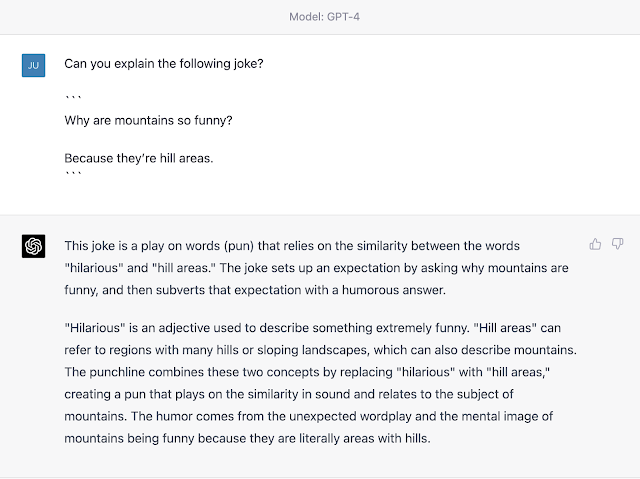So my new favorite hobby (at least for the next half hour or so), is feeding chatGPT (GPT-4 model) clever dad jokes and asking it to explain them.
It's amusing to see the responses, but it's also fascinating. Have you ever told a clever joke, only for someone to not understand it and ask you to explain. Perhaps (at least momentarily), you were at a loss for words, or struggled to succinctly explain the joke. This is perfectly normal. Clever jokes often play on language and can even require you to make complex multi-level logical connections based on double-entendres and hidden meanings.
Strangely enough, its usually much easier to understand a joke, than it is to have to explain the same joke. It can be exceptionally challenging to define what is funny, or even moreso, to explain why something is (or ought to be) funny. It often amounts to a seemingly inexplicable logical incongruence, which can be challenging to define in words.
Having chatGPT interpret dad jokes is an entertaining way to demonstrate the sophistication of recent Large Language Models (like GPT-4). ENJOY!!!
















Comments
Post a Comment